Details
Marc Chagall (1887-1985)
L'Arlequin
avec le cachet 'MARC ChAgAll' (en bas à droite)
huile sur toile
33.2 x 24.1 cm.
Peint vers 1980
stamped 'MARC ChAgAll' (lower right)
oil on canvas
13 x 91⁄2 in.
Painted circa 1980
Provenance
Atelier de l'artiste.
Ida Chagall, France (par descendance).
Kunsthandel Frans Jacobs, Amsterdam.
Acquis auprès de celui-ci par le propriétaire actuel en mai 2000.FURTHER DETAILS
Le Comité Chagall a confirmé l’authenticité de cette œuvre.
« Pour moi, le cirque est un spectacle magique qui apparaît et disparait comme un monde. Un cirque est dérangeant, c’est profond… C’est un monde magique. Le cirque est un jeu intemporel durant lequel les larmes et les sourires, le jeu des bras et des jambes prennent la forme d’un grand art. »
(M. Chagall in Marc Chagall Le Cirque, Painting 1969-70, cat. exp., Pierre Matisse Gallery, New York, 1981, p.26).
Peint en 1980, L’Arlequin célèbre l’un des thèmes les plus persistants dans l’œuvre de Marc Chagall – le monde animé, coloré du cirque. Contrairement à ses compositions parfois peuplées d’une troupe de personnages variés, la scène déborde de l’énergie déchaînée du spectacle, qui se déverse dans l’espace du spectateur, à l’aide du jeu de lignes typique de Chagall, les courbes et les formes qui dialoguent les unes avec les autres devant les rangées d’une audience très schématisée. Cette composition dynamique est établie devant un fond bleu translucide, faisant écho à l’œuvre de Chagall mais faisant également allusion à ses célèbres fenêtres en vitrail qui ornent plusieurs églises de France.
La fascination de Chagall pour le monde des artistes itinérants est apparue lorsqu’il n’était encore qu’un jeune homme à Vitebsk, où il se souvient avoir vu une famille d’acrobates se produire dans la rue, attirant une petite foule tandis qu’ils réalisaient leur modeste répertoire de mouvements. À son arrivée à Paris en 1910, Chagall se retrouve ébloui par la stimulation sensorielle intense et par le sens du spectacle caractérisant les cirques de la ville, un contraste tranchant à ses expériences antérieures des artistes itinérants et bientôt, les clowns, les acrobates et les jolies jeunes femmes réalisant des cascades à dos de cheval se frayent petit à petit un chemin dans son vocabulaire artistique personnel. Réalisé avec des lignes aussi spontanées que précises, entremêlées à des motifs et des formes dansant les unes avec les autres sur un fond bleu irisé, L’Arlequin capture parfaitement l’énergie frénétique qui captivait autant Chagall, sa troupe d’artistes étincelant sous les lumières électriques, à mesure qu’ils se balancent dans les airs ou se préparent à monter à cheval. Le cirque est devenu un aspect important de l’œuvre de l’artiste en 1927, à mesure que Chagall finissait sa série de cent gouaches inspirées des Fables de Jean de La Fontaine. Le marchand d’art Ambroise Vollard, commanditaire du projet, suggère à l’artiste d’entreprendre une deuxième série de tableaux, inspirés du thème du cirque. La suite de gouaches qui en résulte, intitulée Le Cirque Vollard, s’inspire essentiellement des croquis que l’artiste a faits depuis les sièges en loge de Vollard au Cirque d’Hiver de Paris. Chagall amenait souvent sa fille Ida avec lui pour voir les représentations, bien que Sidney Alexander remarque que « Marc était tout aussi puérilement ravi qu’Ida » (S. Alexander, Chagall, A Biography, New York, 1978, p.292). Ces expériences éveillent en Chagall un goût accru pour le cirque, et il se remémore régulièrement ses souvenirs des représentations durant les cinquante années suivantes, en explorant la nature fantastique et l’esprit irrépressible du cirque dans de nombreuses compositions. En discutant de son obsession avec ce thème, Chagall explique son attrait pour ce sujet : « Ces clowns, ces cavaliers à cru et ces acrobates ont élu domicile dans mes visions. Pourquoi ? Pourquoi suis-je autant touché par leur maquillage et leurs grimaces ? Avec eux, je peux aller jusqu’à un nouvel horizon. Attiré par leurs couleurs et leur maquillage, je peux rêver de peindre de nouvelles distorsions psychiques » (Chagall, ‘Le Cirque’, in Marc Chagall Le Cirque, Paintings 1969-80, cat. exp. Pierre Matisse Gallery, New York, 1981).
“For me the circus is a magic show which appears and disappears like a world. A circus is disturbing, it is profound...It is a magic word. The circus is a timeless game where tears and smiles, the play of arms and legs take the form of great art.”
(M. Chagall quoted in Marc Chagall Le Cirque, Painting 1969-70, exh. cat., Pierre Matisse Gallery, 1981, p. 26).
Painted in 1980, L’Arlequin celebrates one of the most enduring themes within Marc Chagall’s oeuvre—the vibrant, colorful world of the circus. The scene is bursting with the riotous energy of the performance, beautifully overflowing into the viewer’s space, with Chagall’s play on the lines, curves and shapes that dialogue with one another, all in front of rows of a very schematised audience. This dynamic composition is set against a translucent blue background, resonating Chagall’s oeuvre, but also alluding to his famous stained-glass windows that ornate several churches in France.
Chagall’s fascination with the world of travelling players had begun as a young man in Vitebsk, where he recalled seeing a family of acrobats performing in the street, attracting a small crowd as they executed their modest repertoire of moves. Upon his arrival in Paris in 1910, Chagall found himself dazzled by the intense sensory stimulation and sense of spectacle which characterized the city’s circuses, a sharp contrast to his previous experiences of the travelling performers, and soon clowns, acrobats, and beautiful young women carrying out stunts on horseback began to weave their way into his personal artistic vocabulary. Executed with such spontaneous yet precise lines interlocked with patterns and shapes all dancing with one another on an iridescent blue and yellow background, L’Arlequin perfectly encapsulates the frenetic energy which so captivated Chagall, its cast of players sparkling under the electric lights, as they swing in the airs, ride a horse or play music.
The circus had become an important aspect of the artist’s oeuvre in 1927, as Chagall was finishing his series of one hundred gouaches based on the fables of Jean de La Fontaine. The dealer Ambroise Vollard, sponsor of this project, suggested the artist undertake a second group of pictures, based this time on the theme of the circus. The resulting suite of gouaches, titled Le Cirque Vollard, were based primarily on sketches that the artist drew from Vollard’s reserved box seats at the Paris Cirque d’Hiver. Chagall often brought his young daughter, Ida, with him to see the performances, although Sidney Alexander noted that “Marc was as childishly delighted with it as Ida” (S. Alexander, Chagall, A Biography, New York, 1978, p. 292). These experiences awoke in Chagall a renewed appreciation for the circus, and he would return to his memories of the performances on a regular basis over the following half century, exploring the fantastical nature and irrepressible spirit of the circus in numerous compositions. Discussing his preoccupation with this theme, Chagall explained the appeal of this subject: “These clowns, bareback riders, and acrobats have made themselves at home in my visions. Why? Why am I so touched by their make-up and their grimaces? With them I can move toward new horizons. Lured by their colours and make-up, I can dream of painting new psychic distortions” (M. Chagall, Le Cirque in Marc Chagall Le Cirque, Paintings, 1969-80, exh. cat., Pierre Matisse Gallery, New York, 1981, n.p.).
Details
Marc Chagall (1887-1985)
L'Arlequin
avec le cachet 'MARC ChAgAll' (en bas à droite)
huile sur toile
33.2 x 24.1 cm.
Peint vers 1980
stamped 'MARC ChAgAll' (lower right)
oil on canvas
13 x 91⁄2 in.
Painted circa 1980
Provenance
Atelier de l'artiste.
Ida Chagall, France (par descendance).
Kunsthandel Frans Jacobs, Amsterdam.
Acquis auprès de celui-ci par le propriétaire actuel en mai 2000.FURTHER DETAILS
Le Comité Chagall a confirmé l’authenticité de cette œuvre.
« Pour moi, le cirque est un spectacle magique qui apparaît et disparait comme un monde. Un cirque est dérangeant, c’est profond… C’est un monde magique. Le cirque est un jeu intemporel durant lequel les larmes et les sourires, le jeu des bras et des jambes prennent la forme d’un grand art. »
(M. Chagall in Marc Chagall Le Cirque, Painting 1969-70, cat. exp., Pierre Matisse Gallery, New York, 1981, p.26).
Peint en 1980, L’Arlequin célèbre l’un des thèmes les plus persistants dans l’œuvre de Marc Chagall – le monde animé, coloré du cirque. Contrairement à ses compositions parfois peuplées d’une troupe de personnages variés, la scène déborde de l’énergie déchaînée du spectacle, qui se déverse dans l’espace du spectateur, à l’aide du jeu de lignes typique de Chagall, les courbes et les formes qui dialoguent les unes avec les autres devant les rangées d’une audience très schématisée. Cette composition dynamique est établie devant un fond bleu translucide, faisant écho à l’œuvre de Chagall mais faisant également allusion à ses célèbres fenêtres en vitrail qui ornent plusieurs églises de France.
La fascination de Chagall pour le monde des artistes itinérants est apparue lorsqu’il n’était encore qu’un jeune homme à Vitebsk, où il se souvient avoir vu une famille d’acrobates se produire dans la rue, attirant une petite foule tandis qu’ils réalisaient leur modeste répertoire de mouvements. À son arrivée à Paris en 1910, Chagall se retrouve ébloui par la stimulation sensorielle intense et par le sens du spectacle caractérisant les cirques de la ville, un contraste tranchant à ses expériences antérieures des artistes itinérants et bientôt, les clowns, les acrobates et les jolies jeunes femmes réalisant des cascades à dos de cheval se frayent petit à petit un chemin dans son vocabulaire artistique personnel. Réalisé avec des lignes aussi spontanées que précises, entremêlées à des motifs et des formes dansant les unes avec les autres sur un fond bleu irisé, L’Arlequin capture parfaitement l’énergie frénétique qui captivait autant Chagall, sa troupe d’artistes étincelant sous les lumières électriques, à mesure qu’ils se balancent dans les airs ou se préparent à monter à cheval. Le cirque est devenu un aspect important de l’œuvre de l’artiste en 1927, à mesure que Chagall finissait sa série de cent gouaches inspirées des Fables de Jean de La Fontaine. Le marchand d’art Ambroise Vollard, commanditaire du projet, suggère à l’artiste d’entreprendre une deuxième série de tableaux, inspirés du thème du cirque. La suite de gouaches qui en résulte, intitulée Le Cirque Vollard, s’inspire essentiellement des croquis que l’artiste a faits depuis les sièges en loge de Vollard au Cirque d’Hiver de Paris. Chagall amenait souvent sa fille Ida avec lui pour voir les représentations, bien que Sidney Alexander remarque que « Marc était tout aussi puérilement ravi qu’Ida » (S. Alexander, Chagall, A Biography, New York, 1978, p.292). Ces expériences éveillent en Chagall un goût accru pour le cirque, et il se remémore régulièrement ses souvenirs des représentations durant les cinquante années suivantes, en explorant la nature fantastique et l’esprit irrépressible du cirque dans de nombreuses compositions. En discutant de son obsession avec ce thème, Chagall explique son attrait pour ce sujet : « Ces clowns, ces cavaliers à cru et ces acrobates ont élu domicile dans mes visions. Pourquoi ? Pourquoi suis-je autant touché par leur maquillage et leurs grimaces ? Avec eux, je peux aller jusqu’à un nouvel horizon. Attiré par leurs couleurs et leur maquillage, je peux rêver de peindre de nouvelles distorsions psychiques » (Chagall, ‘Le Cirque’, in Marc Chagall Le Cirque, Paintings 1969-80, cat. exp. Pierre Matisse Gallery, New York, 1981).
“For me the circus is a magic show which appears and disappears like a world. A circus is disturbing, it is profound...It is a magic word. The circus is a timeless game where tears and smiles, the play of arms and legs take the form of great art.”
(M. Chagall quoted in Marc Chagall Le Cirque, Painting 1969-70, exh. cat., Pierre Matisse Gallery, 1981, p. 26).
Painted in 1980, L’Arlequin celebrates one of the most enduring themes within Marc Chagall’s oeuvre—the vibrant, colorful world of the circus. The scene is bursting with the riotous energy of the performance, beautifully overflowing into the viewer’s space, with Chagall’s play on the lines, curves and shapes that dialogue with one another, all in front of rows of a very schematised audience. This dynamic composition is set against a translucent blue background, resonating Chagall’s oeuvre, but also alluding to his famous stained-glass windows that ornate several churches in France.
Chagall’s fascination with the world of travelling players had begun as a young man in Vitebsk, where he recalled seeing a family of acrobats performing in the street, attracting a small crowd as they executed their modest repertoire of moves. Upon his arrival in Paris in 1910, Chagall found himself dazzled by the intense sensory stimulation and sense of spectacle which characterized the city’s circuses, a sharp contrast to his previous experiences of the travelling performers, and soon clowns, acrobats, and beautiful young women carrying out stunts on horseback began to weave their way into his personal artistic vocabulary. Executed with such spontaneous yet precise lines interlocked with patterns and shapes all dancing with one another on an iridescent blue and yellow background, L’Arlequin perfectly encapsulates the frenetic energy which so captivated Chagall, its cast of players sparkling under the electric lights, as they swing in the airs, ride a horse or play music.
The circus had become an important aspect of the artist’s oeuvre in 1927, as Chagall was finishing his series of one hundred gouaches based on the fables of Jean de La Fontaine. The dealer Ambroise Vollard, sponsor of this project, suggested the artist undertake a second group of pictures, based this time on the theme of the circus. The resulting suite of gouaches, titled Le Cirque Vollard, were based primarily on sketches that the artist drew from Vollard’s reserved box seats at the Paris Cirque d’Hiver. Chagall often brought his young daughter, Ida, with him to see the performances, although Sidney Alexander noted that “Marc was as childishly delighted with it as Ida” (S. Alexander, Chagall, A Biography, New York, 1978, p. 292). These experiences awoke in Chagall a renewed appreciation for the circus, and he would return to his memories of the performances on a regular basis over the following half century, exploring the fantastical nature and irrepressible spirit of the circus in numerous compositions. Discussing his preoccupation with this theme, Chagall explained the appeal of this subject: “These clowns, bareback riders, and acrobats have made themselves at home in my visions. Why? Why am I so touched by their make-up and their grimaces? With them I can move toward new horizons. Lured by their colours and make-up, I can dream of painting new psychic distortions” (M. Chagall, Le Cirque in Marc Chagall Le Cirque, Paintings, 1969-80, exh. cat., Pierre Matisse Gallery, New York, 1981, n.p.).
.jpg)
.jpg)
.jpg)
.jpg)

.jpg)
.jpg)
.jpg)
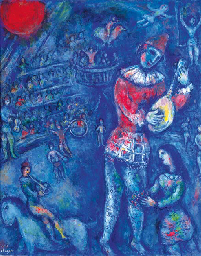
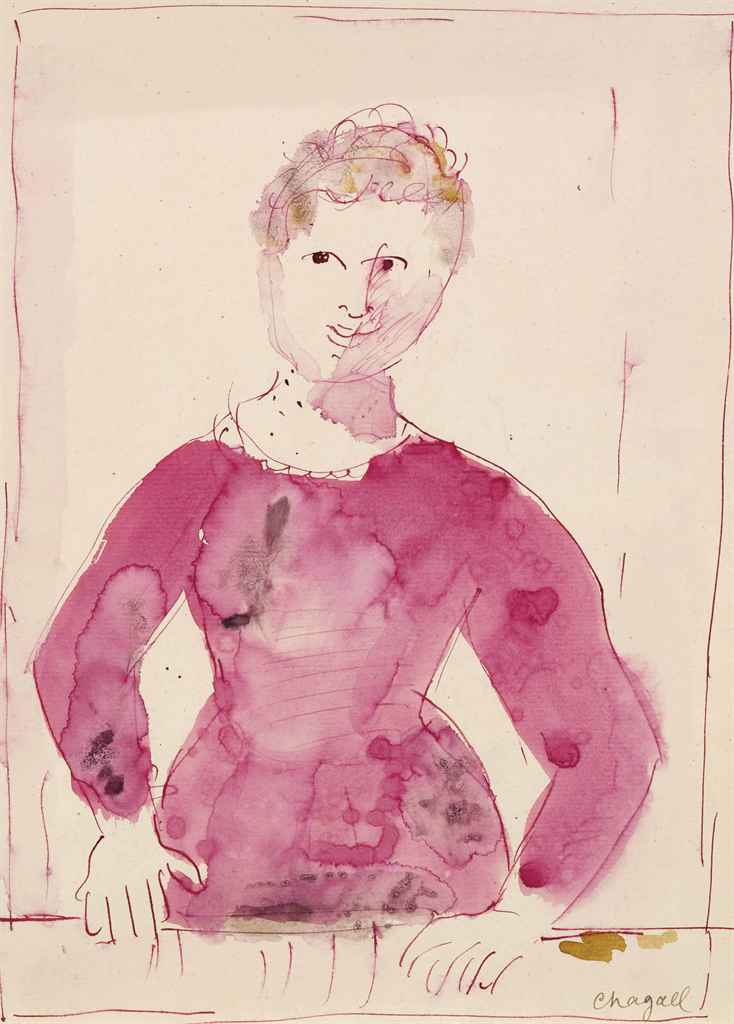
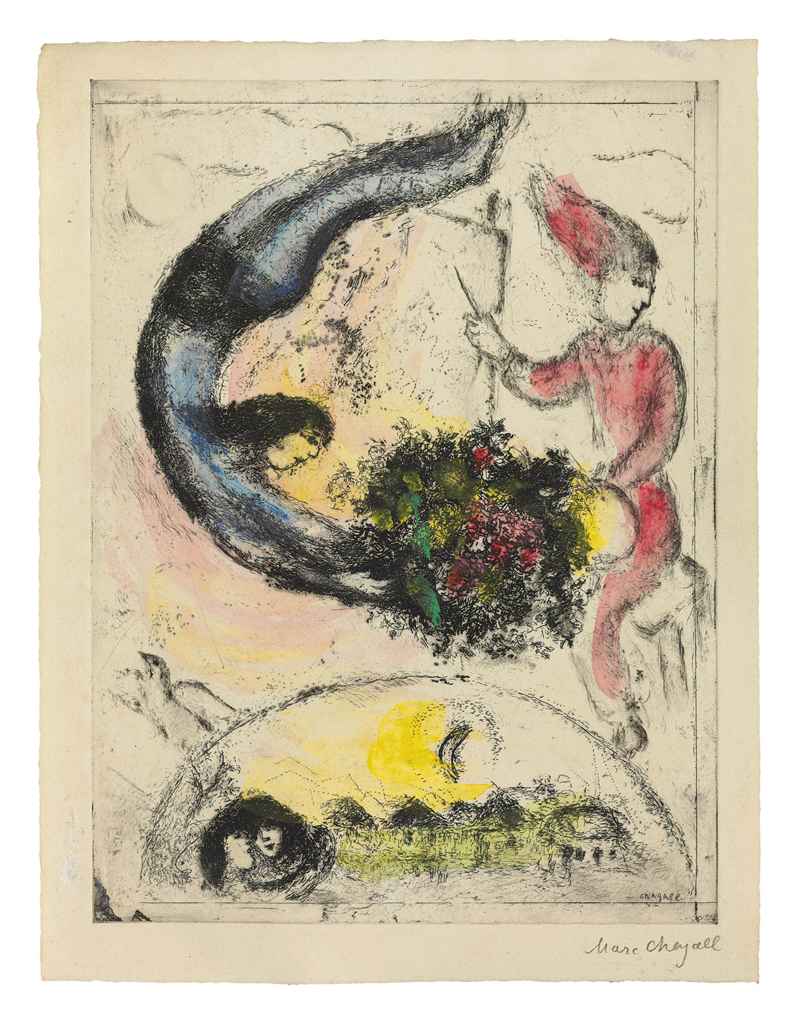
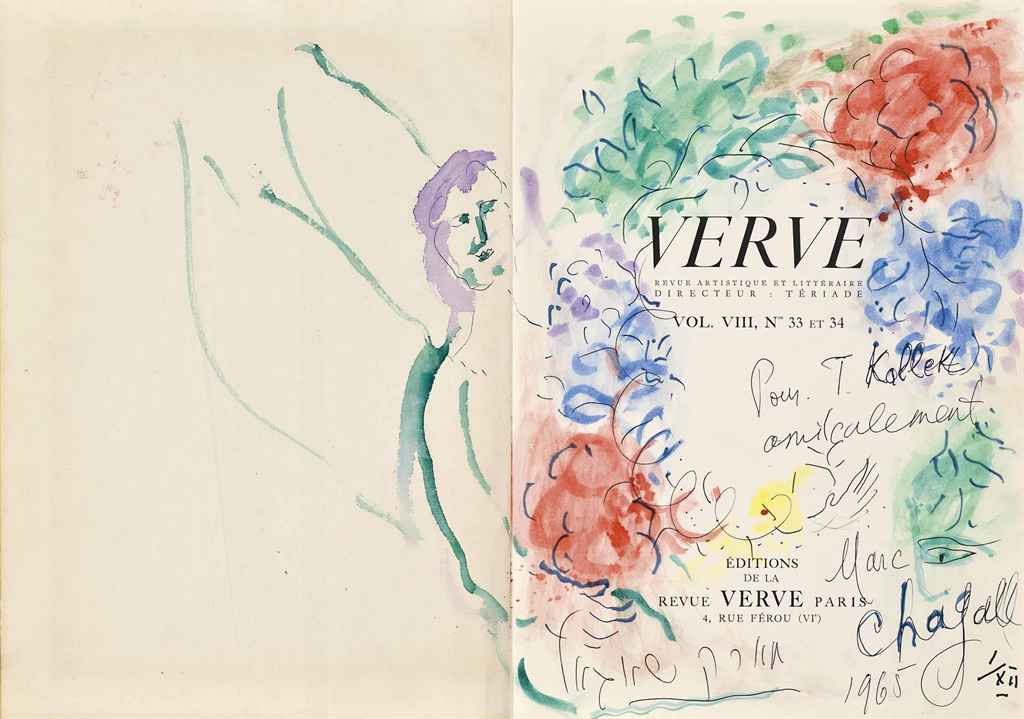
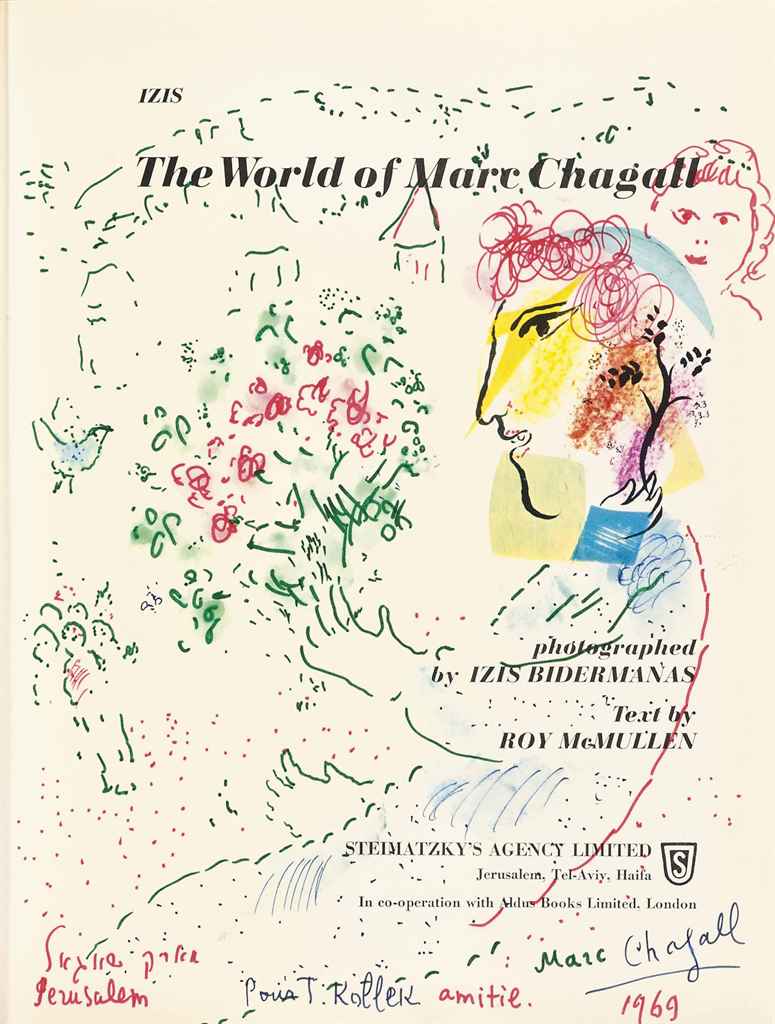
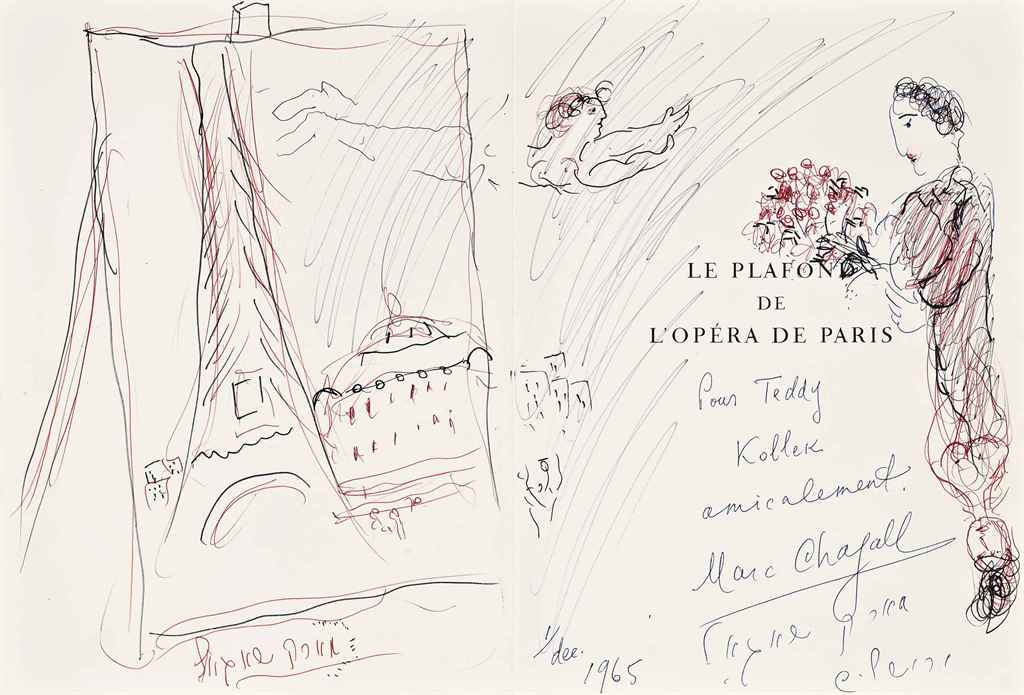
.jpg)
Testen Sie LotSearch und seine Premium-Features 7 Tage - ohne Kosten!
Lassen Sie sich automatisch über neue Objekte in kommenden Auktionen benachrichtigen.
Suchauftrag anlegen